Kate had taken the Maritimes tour with her father and brother years earlier. When we were considering booking another tour, she said we had to do this one to see the wonder of the Bay of Fundy.
Tuesday, October 1st, 2024 ~ We boarded the bus first thing in the morning bound for the province of New Brunswick. Fun facts: 1) New Brunswick has 50 covered bridges and Hartland Covered Bridge is the longest covered bridge in the world; 2) New Brunswick is Canada’s only officially bilingual province; and 3) The Bay of Fundy draws visitors from around the world to witness two of nature's most dramatic tidal displays.
Near the top of the map is where we’ll spend the night and see a tidal bore, but first we stopped at Hopewell Rocks Provincial Park in Hopewell Cape to walk on the ocean floor at low tide.
Fran Steeves (I’ll tell you her story next week), our Hopewell Rocks Interpretive Guide, began our tour in the Interpretive Center. She described the geology of the funnel-shaped Bay of Fundy, which stretches for nearly 169 miles, acts like a massive bathtub. The tide comes in from the Atlantic Ocean against its normal flow and creates a natural rocking motion.
The Fundy tides are the highest on earth rising and falling dramatically, up to 46 feet every ~12 hours. To put this in perspective, that’s about the height of a four-story building. If you were standing on the ocean floor at Hopewell Rocks when the tide starts coming in, in 5-6 minutes, the water level would rise up your body by about one foot but during that same time, the water's edge would have moved inland by about 3-4 feet. This rapid rate is why visitors are warned to be mindful of tide times and always follow park guidelines.
Our view from the observation deck high above the Bay left us in awe. When the tide comes in, it erodes the sea stack formations.
It looks surreal as we’re getting closer. The sea stacks are called “Flowerpot Rocks” because of the trees on top (and New Brunswick is known for its multitude of trees).
We descended ~100 steps to walk on the bay/ocean floor. In high tide, the first level of the staircase is under water.
There are 17 sea stacks along the shore, including Lover’s Arch and Little Bear.
Hard to believe the water comes all the way up to where I’m standing in a little over 12 hours, but the evidence of these massive tides was everywhere…water marks on the rocks, stranded seaweed, and muddy flats stretching into the distance. In hours, this walkable landscape will be submerged under several stories of water again.
The water is brown because the bathtub motion of the tides results in the water being in constant motion. Each time the tide changes in the Bay of Fundy, it moves 160 billion tons of water. To get that same amount of water over Niagara Falls, you'd need to let it flow for 21 months straight.
This gives you perspective on how tall the sea stacks are. When the tide rises after ~12 hours, the seaweed is covered.
The Bay of Fundy performs this remarkable cycle twice each day, transforming from walkable seabed to deep water and back again, a testament to nature's rhythms. One last look at this amazing place.
Then we headed to Château Moncton in Moncton, New Brunswick for the night. The boardwalk outside our hotel overlooked a narrower part of the Bay.
The evening's main event was the tidal bore, a rare phenomenon where the incoming tide forms a wave that travels upstream against the river's current. We took a walk along the boardwalk at 9:45 PM, awaiting its scheduled 10:12 PM appearance. The anticipation built as we stared at the calm water below.
We heard it before we saw it…a rushing sound that grew louder as a visible wave approached. Watching the tide turn before our eyes, I understood why people travel from around the world to witness this daily drama.
When it got near us, it was breaking up and the tide was rising again.
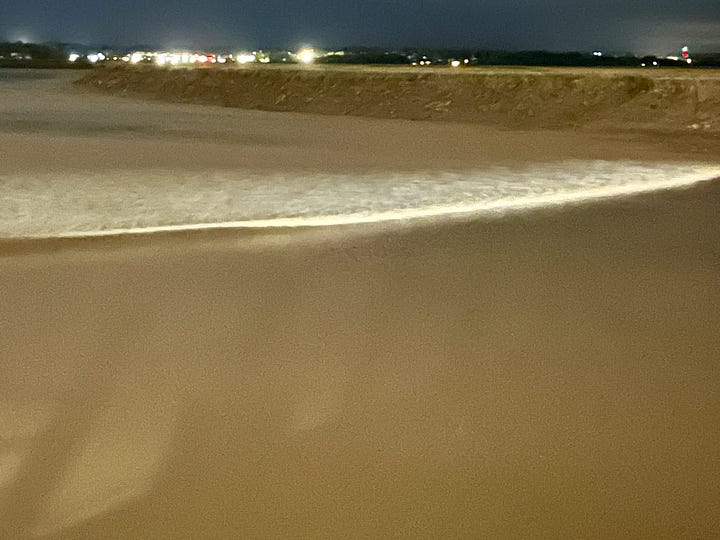
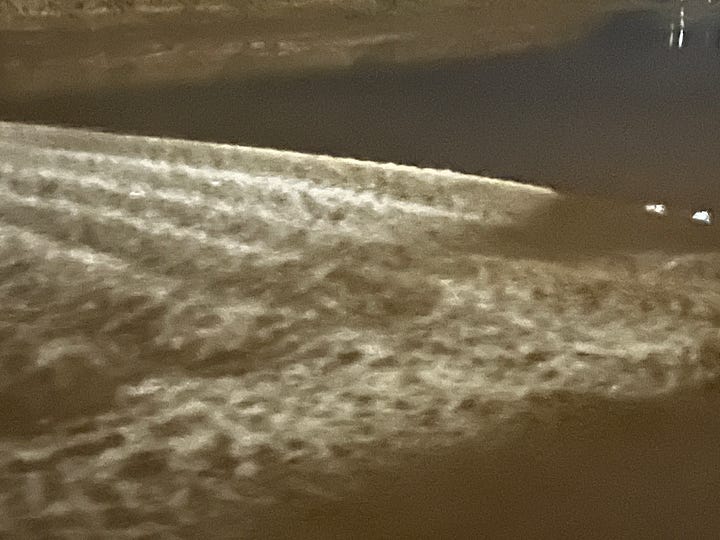
We were grateful to have been able to visit Hopewell Rocks during low tide, and seeing the tidal bore at night, but we would have loved to see the high tide and the tidal bore during daylight. That’s the downside of a bus tour…you can’t see everything but we were grateful we had awesome weather.
Until next time,
Deb
If you missed the first post of our Maritime Provinces visit, check it out below.
Next Up: Meet Fran Steeves ~ Making the Rest of her Life, the Best of her Life

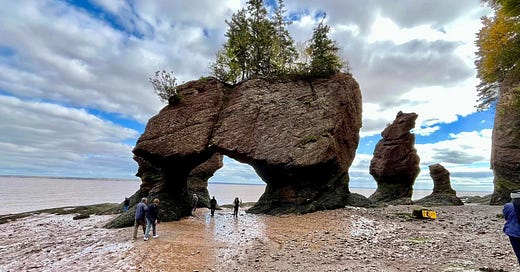





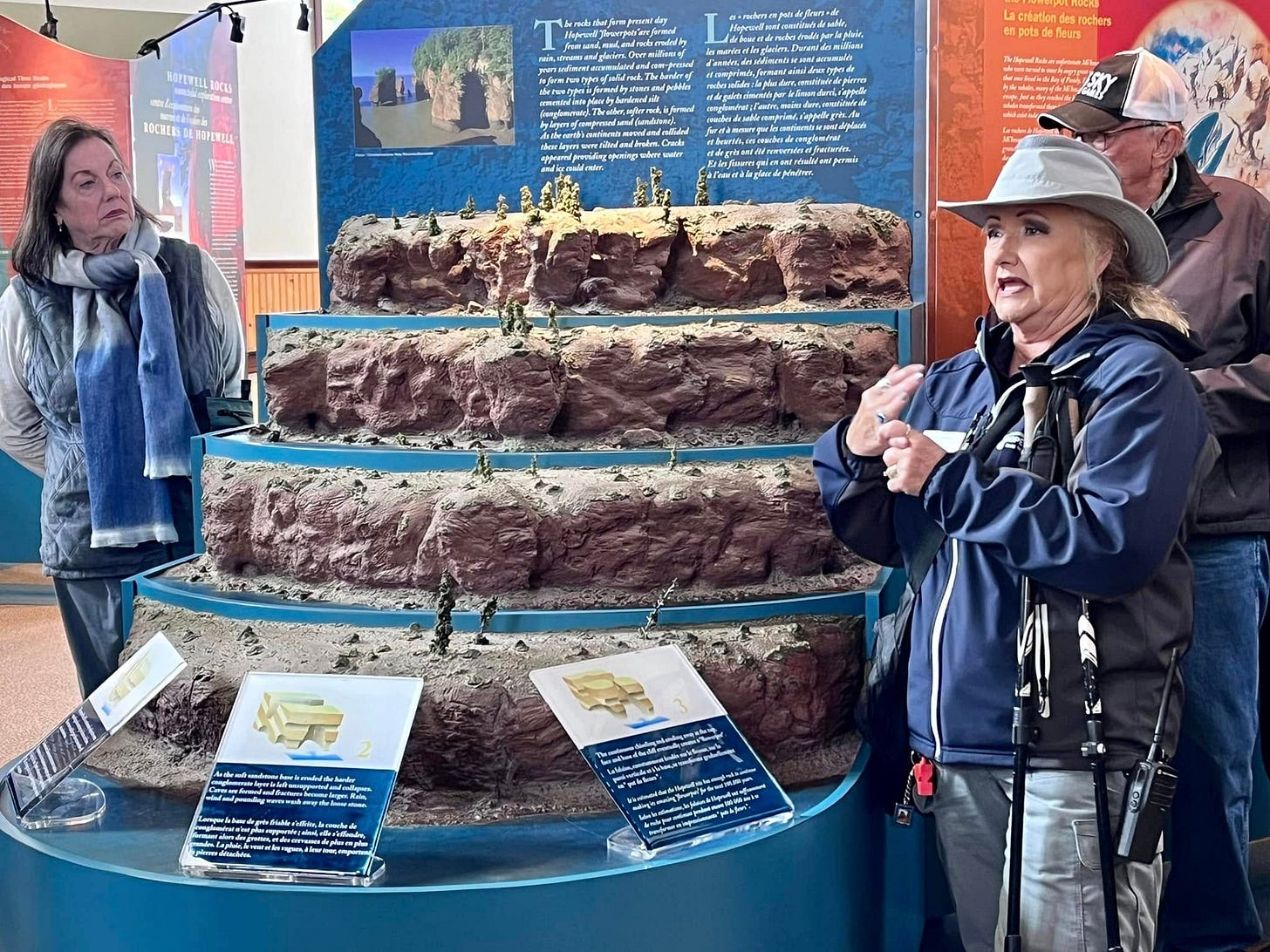
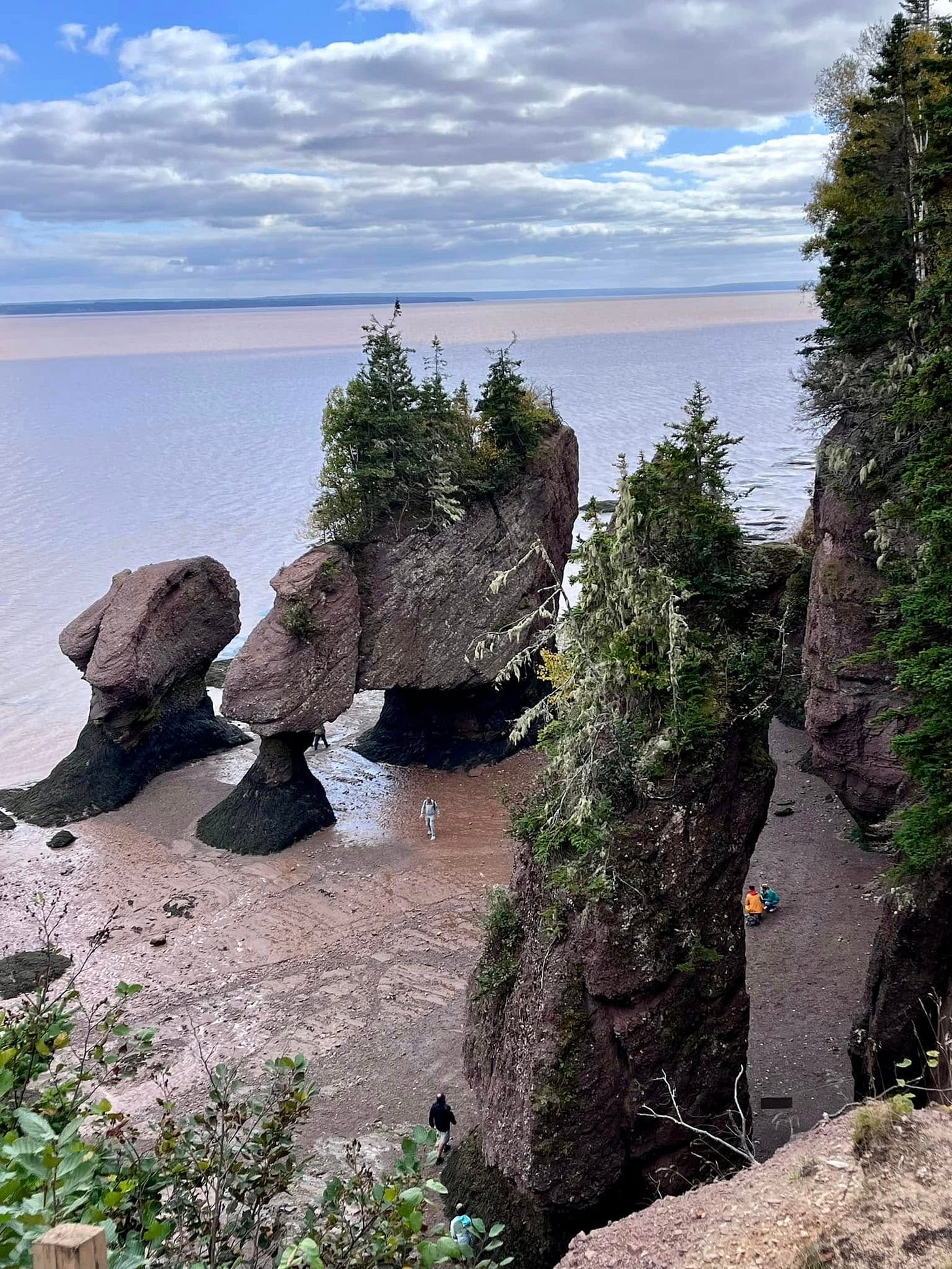
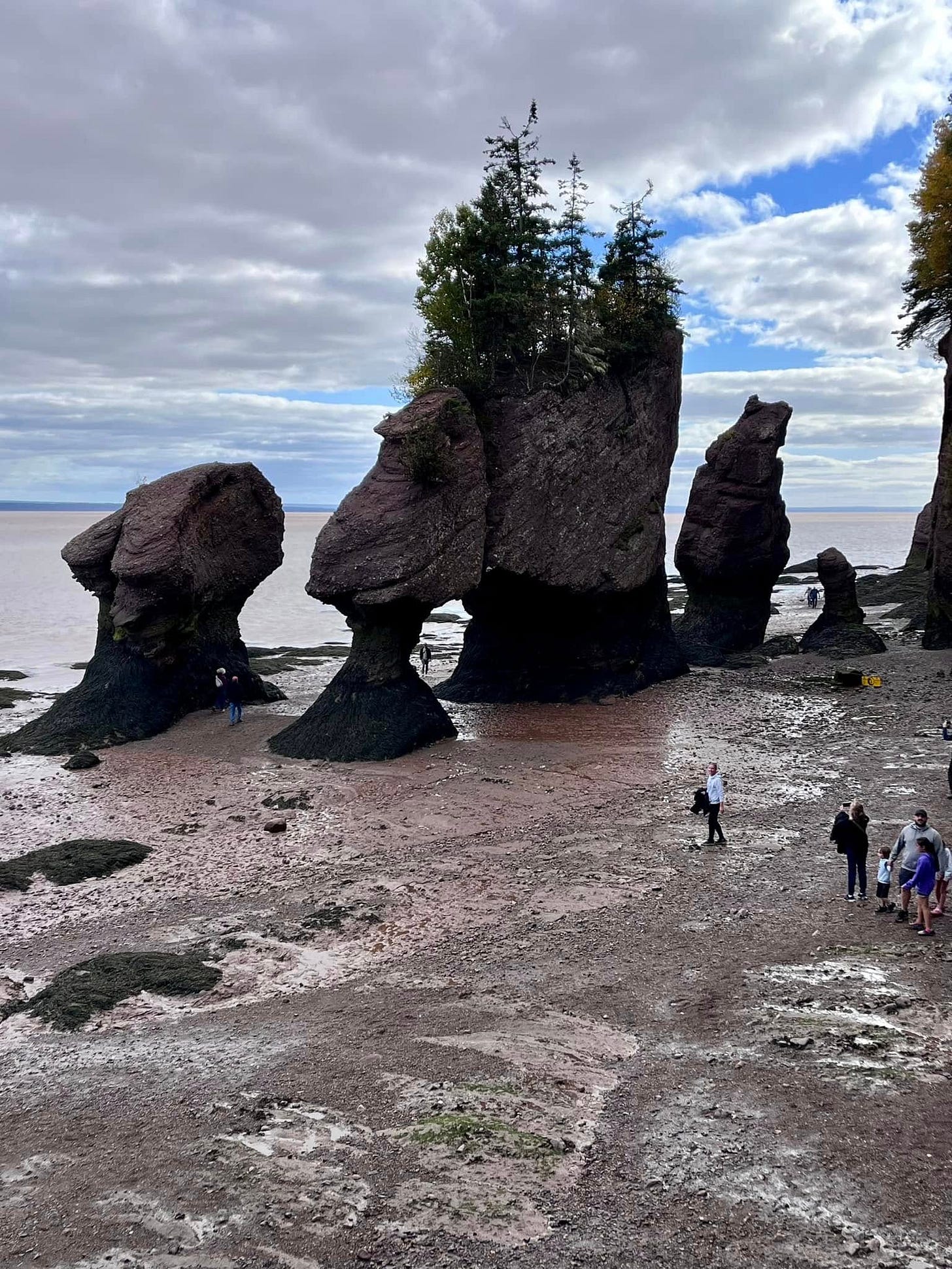
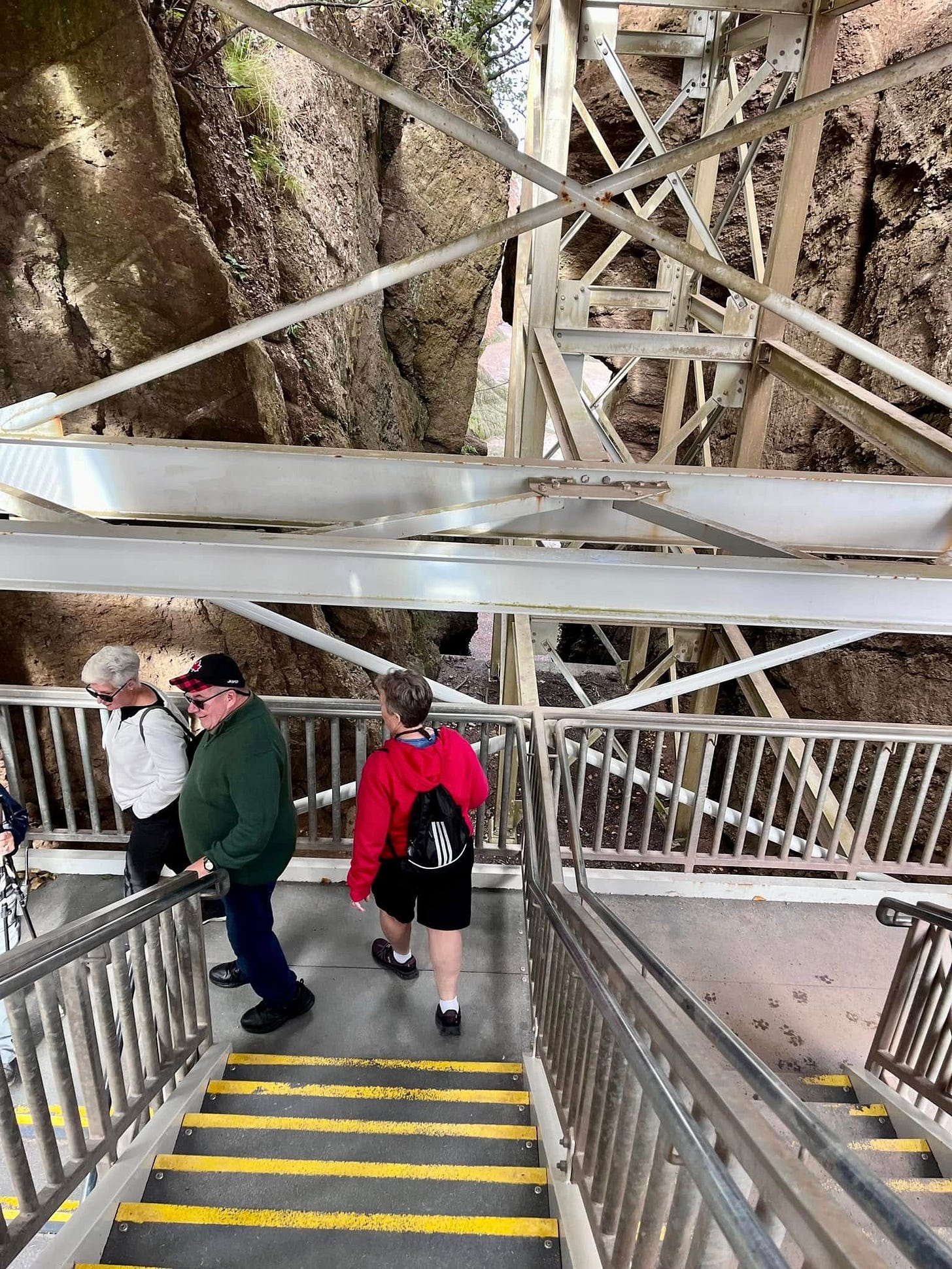

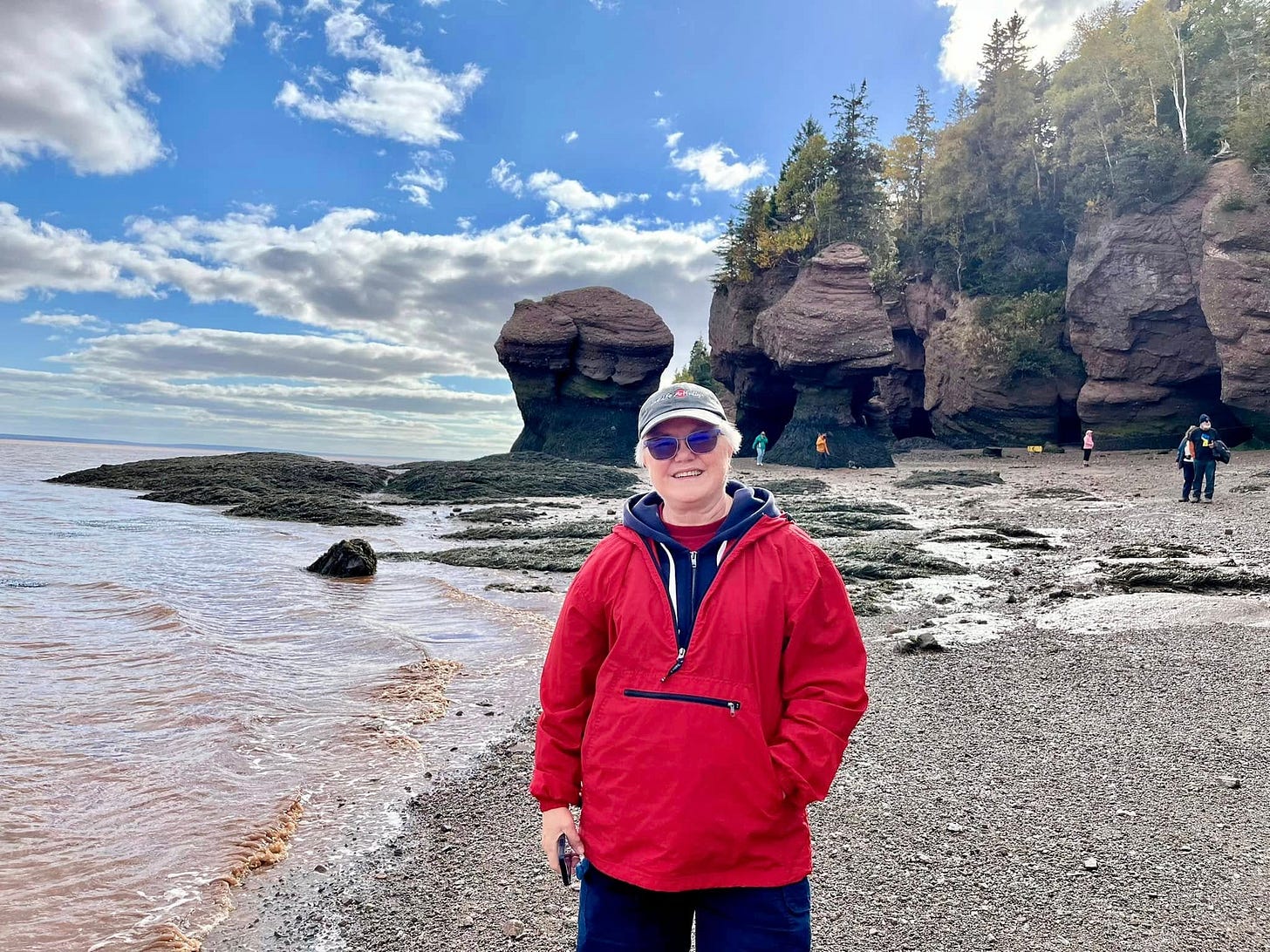
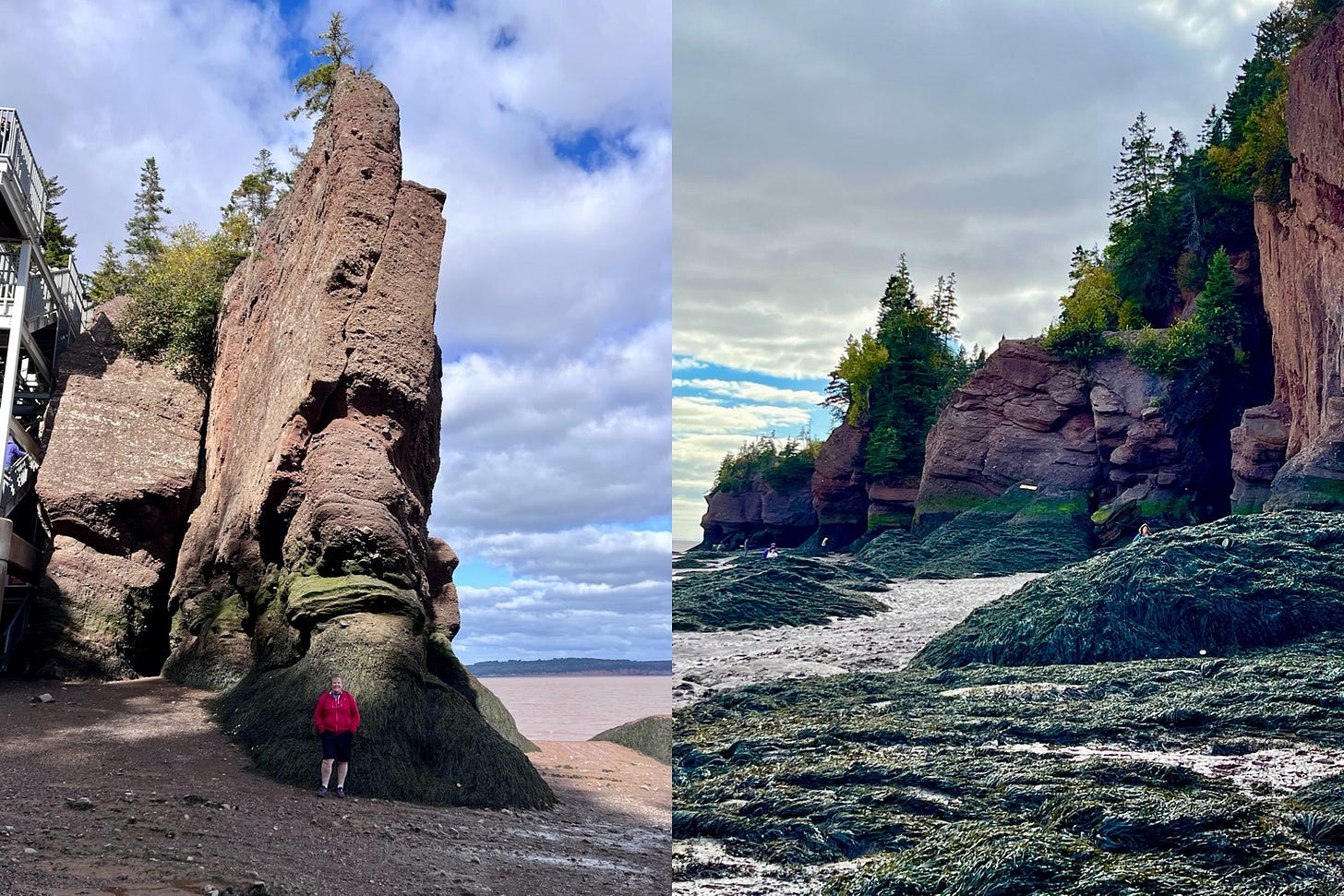
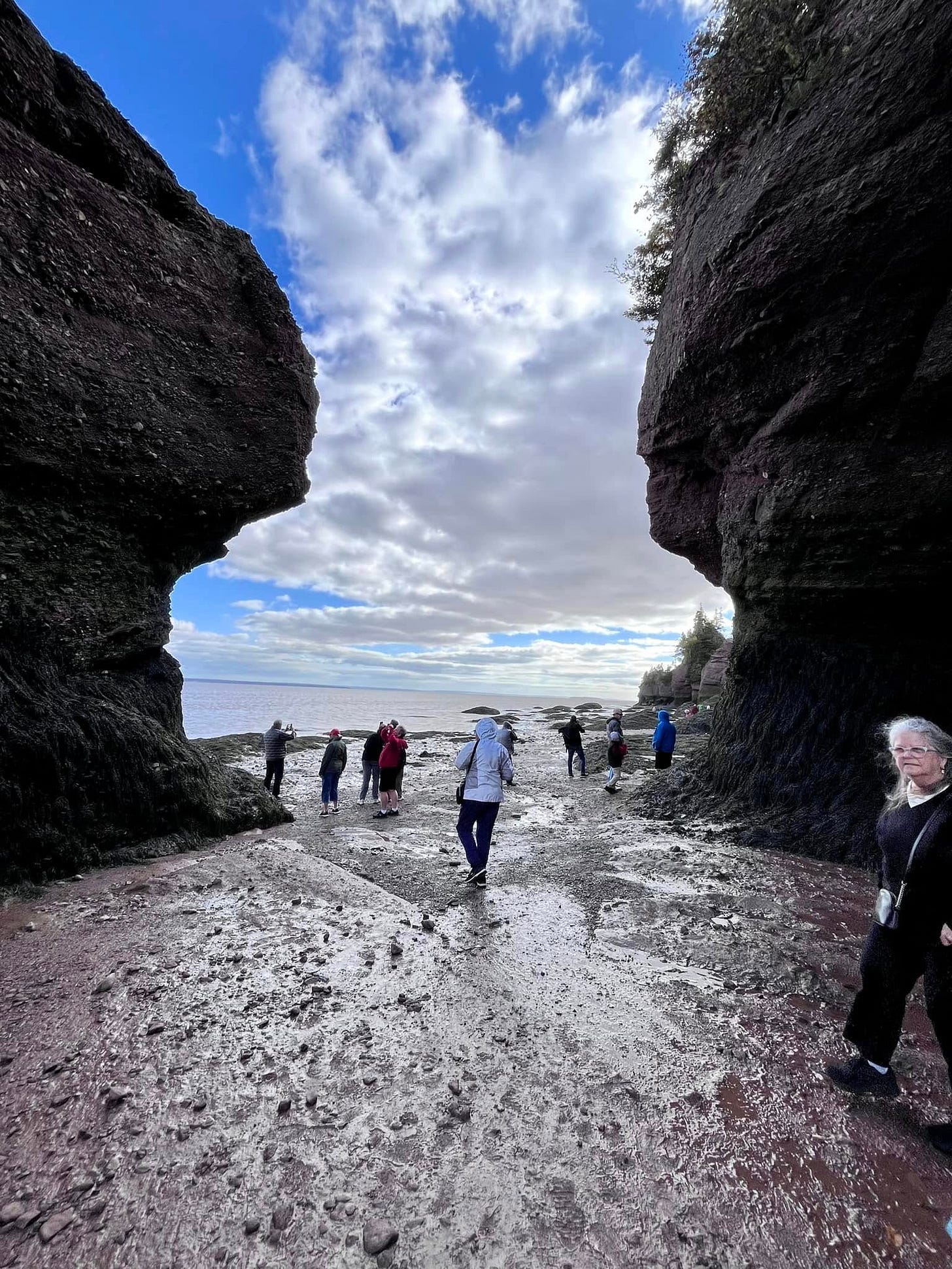

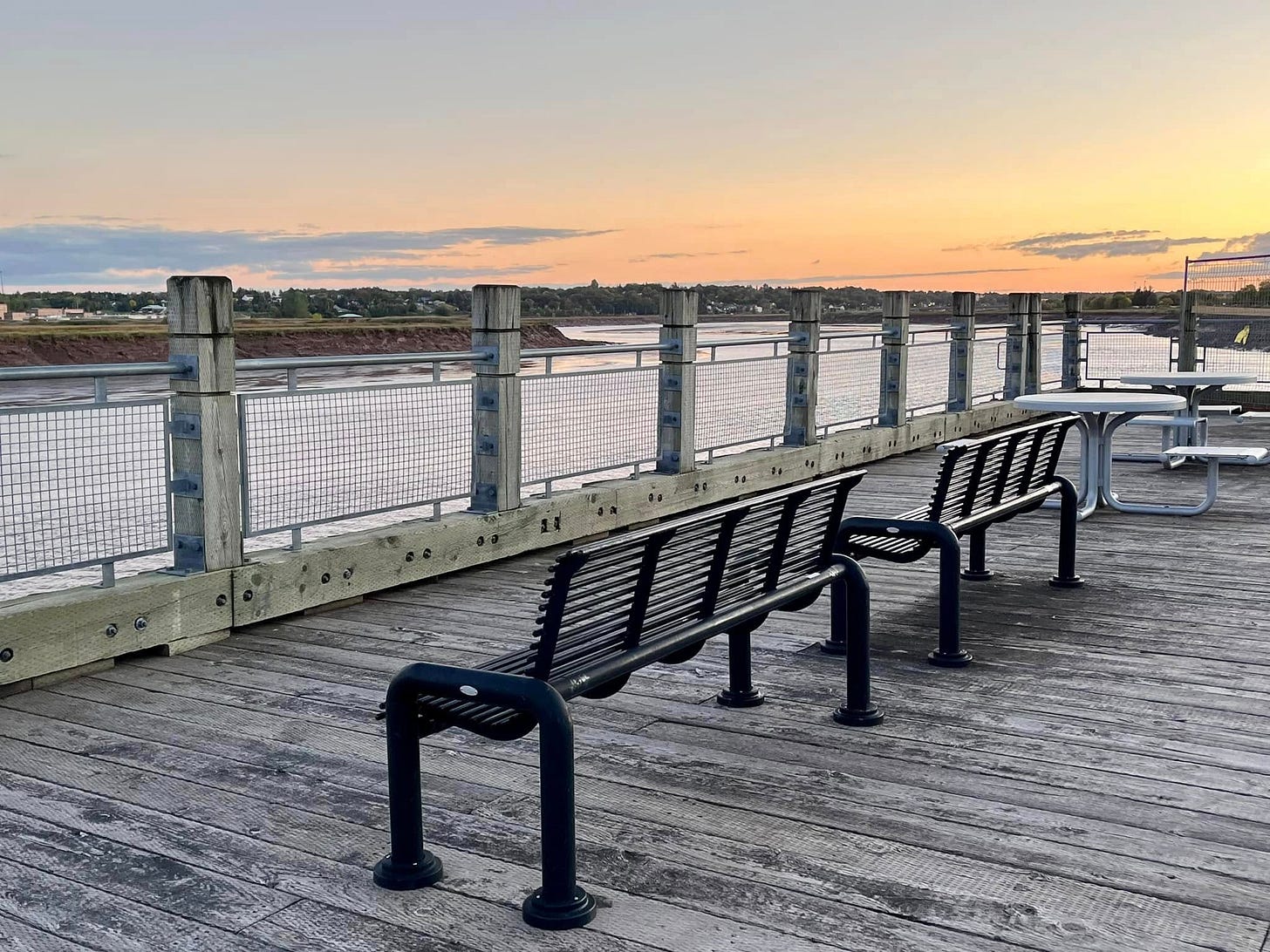
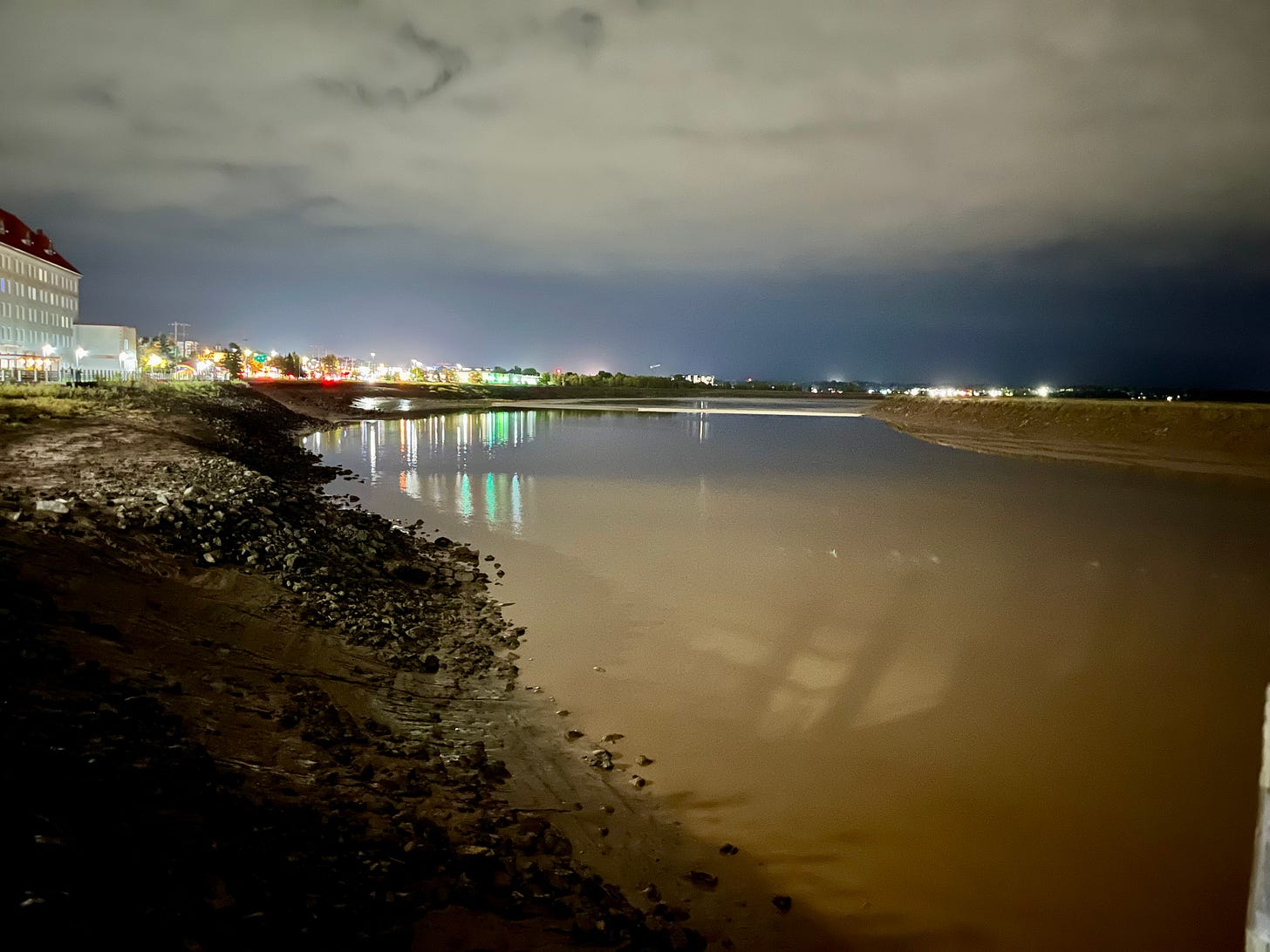

Beautiful!!!!
Flowerpot trees! What an interesting view at low tide. Thanks for the magnificent description of what happens here. Curious if you could feel the magnetic pull of the tides.